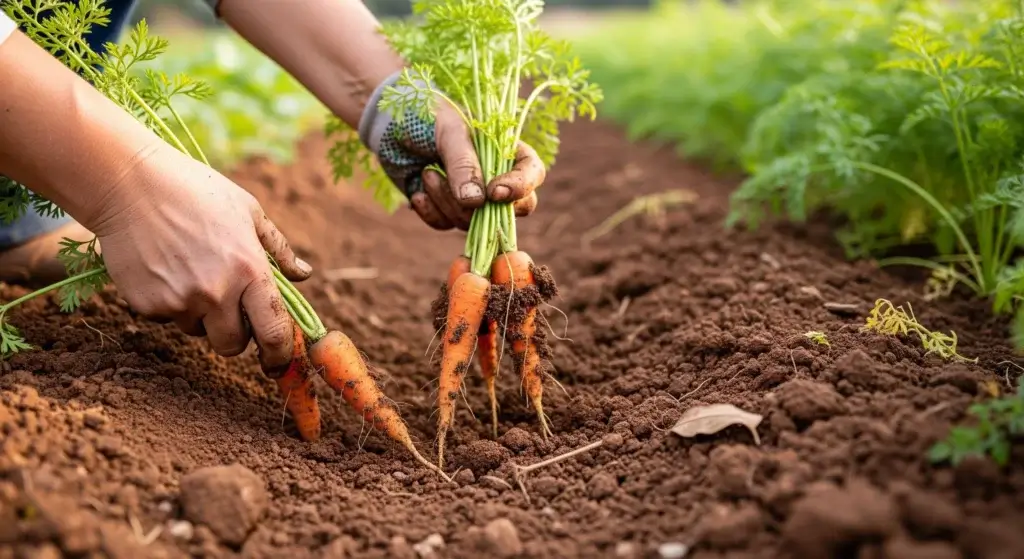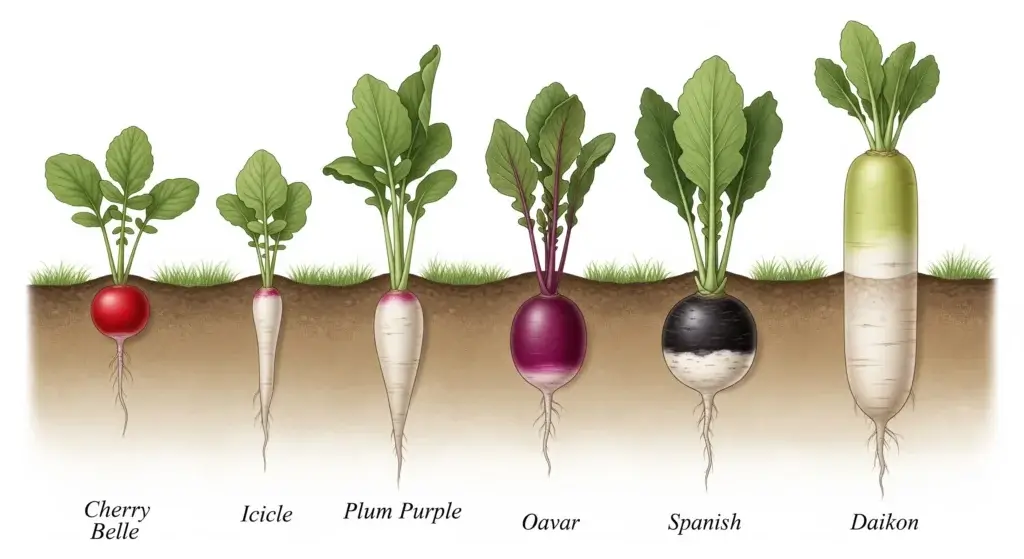
Aloe vera isn’t just the cool, chill houseplant that sits pretty — it’s also a skincare hero.
But even legends need the right setup.
If your aloe’s looking sad, floppy, or suspiciously squishy, it might be living in the wrong kind of soil.
Don’t worry — we’ve got your aloe’s back (and roots).
In this all-you-need-to-know guide, we’ll break down the perfect soil mix, how to avoid soggy disasters, and which mistakes will send your plant into full drama mode.
Whether your aloe is soaking up sun on a windowsill or living its best outdoor life, the right dirt = happy plant vibes. Let’s dig in.
Why Soil Matters for Aloe Vera Plants
Aloe vera isn’t a thirsty diva — it’s a desert native that thrives on dry vibes and space to breathe.
Unlike those tropical plants that act like they’re on vacation in Bali, aloe hates soggy feet.
If you stick it in wet, clingy soil, it basically goes into full meltdown mode.
Think: mushy leaves, sad growth, and a smell that says “something died.”
Problems caused by poor soil:
- Leaves going yellow or turning into plant mush
- Barely growing or just looking… tired
- Funky-smelling dirt (that’s root rot saying hello)
- Crispy brown leaf tips that scream, “Help!”
Quick fact:
Aloe stores water in its thick, squishy leaves — like a built-in hydration backpack. So it needs soil that dries out fast.
Too much water? It’s like making your aloe wear a wet hoodie 24/7. No thanks.

What Type of Soil Does Aloe Vera Need?
Think of aloe vera as a plant that grew up in the desert — it’s not looking for rich, soggy spa soil.
It wants dry, gritty, no-drama dirt that lets it live its best cactus-adjacent life.
Here’s what aloe-friendly soil looks like:
- Drains fast — like your Wi-Fi signal during a storm
- Low in organic stuff — aloe isn’t into fancy compost snacks
- Loose and sandy — think beach, not swamp
- pH between 6.0–7.5 — chill to slightly sassy on the acidity scale
Key properties of good aloe vera soil
| Property | Description |
| Drainage |
Fast-draining to prevent root rot
|
| Texture |
Light and gritty, not compacted
|
| Aeration |
Allows roots to breathe
|
| Low moisture |
Dries quickly after watering
|
| Nutrient level |
Balanced—doesn’t need rich compost
|
Recommended Aloe Vera Soil Mixes
1. Cactus or succulent potting mix (store-bought)
If you’re new to plant life or just don’t want to play soil scientist, grab a cactus or succulent potting mix from your local garden store.
It’s like ordering takeout instead of cooking — super convenient and still gets the job done.
What to look for:
- Sand, perlite, pumice, or gravel (aka: the dream team for drainage)
- Low peat moss (peat = water hoarder, and aloe is NOT into soggy vibes)
- Light, fluffy texture — no heavy, swampy soil allowed
Top fan favorites:
- Miracle-Gro Cactus, Palm & Citrus Mix
- Hoffman Organic Cactus & Succulent Mix
- Bonsai Jack Succulent Soil (for those who take aloe seriously)
Pro tip: Even good mixes can glow up — toss in extra perlite or coarse sand to keep things airy and fast-draining.
2. DIY aloe vera soil mix
Wanna mix your own aloe dirt like a plant wizard? It’s super satisfying — and your aloe will totally thank you with thriving, juicy leaves.
DIY aloe dirt recipe:
- 2 parts cactus mix or basic potting soil
- 1 part coarse sand (not beach sand — think “builder’s sand”)
- 1 part perlite or pumice (hello, aeration!)
Optional extras (because aloe is fancy):
- Crushed granite
- Lava rock
- Tiny gravel
How to mix it up:
- Toss everything in a big bucket.
- Stir it like cookie dough.
- Test it: pour in water — if it drains faster than you scroll TikTok, it’s aloe-approved.

Drainage Tips: Avoiding Root Rot
Great soil is like a killer outfit — but without the right shoes (aka pot and watering setup), your aloe’s look is doomed.
Let’s make sure your plant isn’t sitting in a soggy mess like a forgotten towel in gym class.
Choose the right pot
- Terracotta pots = the breathable cotton tee of the plant world. They let your soil dry out fast, which is exactly what aloe wants.
- Drainage holes are a must. No hole = no escape route for extra water = aloe disaster.
- Skip glass containers unless you’re growing sea monkeys. Glass traps moisture like a clingy ex — and your aloe hates that.
Drainage boosters
- Layer pebbles or gravel at the bottom of the pot like you’re making a fancy plant parfait. This helps extra water escape instead of soaking the roots.
- Mesh screen trick: Put one over the drainage hole so your soil doesn’t sneak out every time you water. It’s like giving your aloe pot a little strainer.
Soil for Indoor vs. Outdoor Aloe Vera
Indoor aloe vera
- Loves light, fluffy soil — think “airy pillow for roots”
- Add extra perlite to help water drain in those moody indoor shadows
- Park it near a sunny window — no one likes sitting in a damp, dark corner (not even plants)
Outdoor aloe vera:
- Wants sandy or rocky soil, like it’s living in a spa resort in Arizona
- Raised garden beds = aloe on stilts = water drains like a boss
- If it’s raining buckets, toss on a garden cover or give it a break from the downpour. Aloe is not here for monsoon energy.
Soil pH and Nutrients: What Aloe Needs
Aloe’s chill but picky about pH — it likes things neutral to slightly alkaline (pH 6.0–7.5).
Anything too acidic, and it throws a fit.
How to fix that:
- Grab a pH test kit (yes, you can be your aloe’s personal scientist)
- If your soil’s too sour? Mix in crushed eggshells or a sprinkle of agricultural lime — it’s like Tums for your plant.
What about plant food?
Here’s the tea: Aloe vera is low-maintenance — it doesn’t want gourmet meals.
- Skip rich soils with too much nitrogen — they make aloe get leggy and floppy like overcooked spaghetti
- Instead, give it a light snack: diluted cactus fertilizer just once every 6 months during growing season
- Basically, aloe wants brunch twice a year and then to be left alone.
Soil Maintenance Tips for Healthy Aloe
Just like your phone needs a reboot once in a while, your aloe’s soil needs some love too.
- Repot every 2–3 years — fresh soil = fresh start + more leg room for roots
- Remove dead leaves + gunk like you’re Marie Kondo-ing your plant’s vibe — less clutter, less mold
- Sterilize DIY soil (just microwave or bake it) to kill off party crashers like pests and fungus
- Toss old soil from sick plants — it’s like rewearing gym socks without washing them. Don’t.

What NOT to Use for Aloe Vera Soil
Your aloe’s not high-maintenance, but it does have standards.
Here’s what to keep far, far away:
- Peat moss: It’s a moisture hoarder. Aloe hates being soggy. Think clingy ex.
- Clay-heavy soil: Drains like a clogged sink. Aloe roots can’t breathe = drama.
- Compost overload: Too rich, too wet, too extra. Aloe likes its nutrients like its drama: minimal.
- Random backyard dirt: Sounds natural, right? Nope. Full of mystery bugs, bacteria, and the wrong texture — like using sandpaper as a face scrub. Just… no.
Summary Table: Best Soil for Aloe Vera
| Soil Component | Ideal | Avoid |
| Drainage | Fast-draining | Water-retentive |
| Texture | Gritty, loose | Dense, compact |
| Ingredients | Sand, perlite, pumice | Peat moss, clay |
| Soil Type | Cactus/succulent mix |
Regular garden soil
|
| pH Level | 6.0 – 7.5 | Below 5.5 |
| Organic Matter | Low to moderate | High |
Final Thoughts: Build the Right Foundation
Aloe vera is basically the chill friend of the plant world—low-drama, super forgiving, and cool with being left on read… unless you mess up the soil.
Then it’s over faster than a TikTok trend.
Whether you go for a commercial succulent mix or DIY your own, ensure your soil is:
- Loose and sandy
- Well-aerated
- Low in organic matter
- Drying quickly between waterings
So whether you buy a fancy cactus mix or go full DIY scientist, just make sure your aloe’s roots get the dry, breezy setup they crave.



